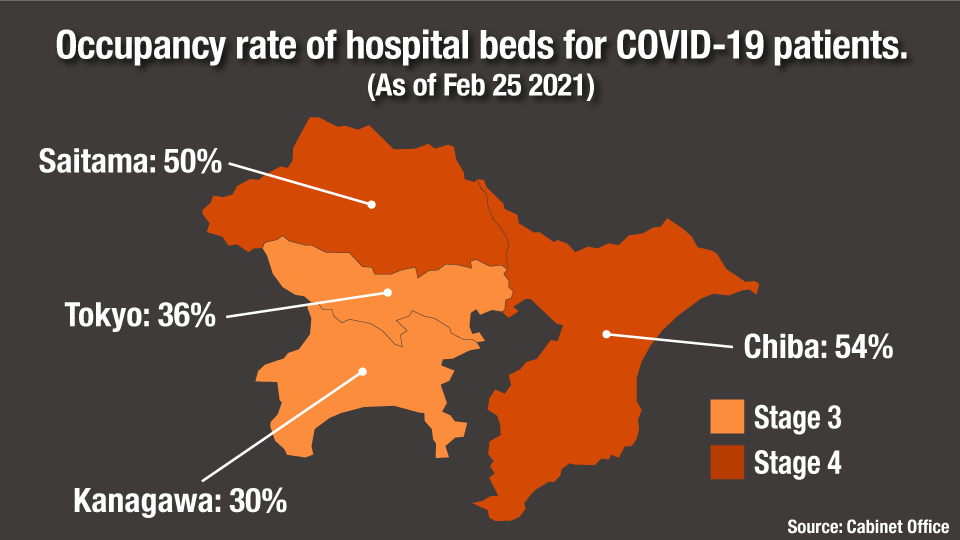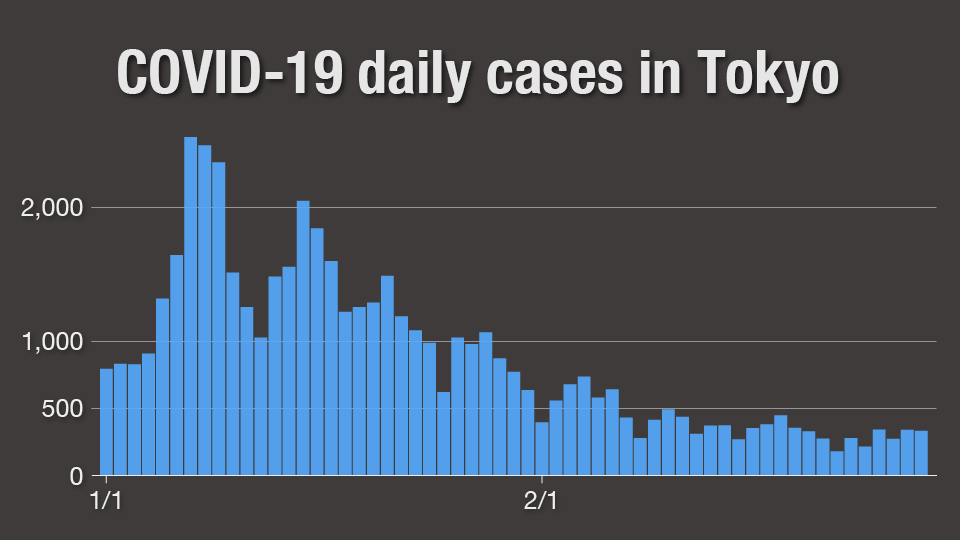The Tokyo Metropolitan Government confirmed 329 infections on Sunday. Although the daily tally has been below 500 for 22 straight days, it still marked an increase of more than 50 compared to one week ago.
"We now need to thoroughly reduce people's movements,” says Tokyo Governor Koike Yuriko. “This must be the top priority."
Officials in the capital have intensified preventive measures. Since February 27, athletic facilities and parking lots at public parks run by the metropolitan government have been closed to the public until the state of emergency ends.
They have also invoked a provision of the special anti-coronavirus law to urge 34 bars and restaurants to comply with a request to close early. Those that persistently refuse could face a fine.
Public health centers are carrying out epidemiological surveys to track people who came into close contact with others who have the virus. Officials say this will help to better trace infection routes.
Contact tracing has so far focused on facilities for the elderly. But due to concerns about suspected clusters, the metropolitan government has asked public health experts to expand the measure.

The state of emergency also remains in place for the capital’s neighboring prefectures Chiba, Saitama and Kanagawa. Hospital bed availability is one of the criteria for deciding whether to lift the declaration, but the situation remains severe across the greater Tokyo region. Saitama and Chiba are both at stage 4 – the maximum level of alert.
Okamoto Yoshitaka, the director of Chiba Rosai Hospital warns “the fall in patient numbers might not be as big as people expect.”
Monitoring new strains
The central government is also doing more to monitor new strains of the virus being discovered nationwide. The first was confirmed at an airport in December.
The health ministry says as of Thursday, there have been 201 more. Among them, 153 were identified in the community. The rest were detected in airport quarantine. Most are a variant first seen in Britain, but there are others from South Africa and Brazil.
Japan’s vaccine rollout is underway, but experts say the shots may not be as effective against strains containing a mutation known as E484K. They are calling for more vigilance.
The government has already boosted the number of staff involved in genome sequencing at the National Institute of Infectious Diseases, which can now handle up to 800 cases per week.
This month, the government plans to enable public health institutions nationwide to test more quickly for new variants.
All the while, there are just days left until March 7. Omi Shigeru, who heads the central government’s panel of experts on the pandemic, sounded an alarm last Friday: "There is little doubt that the mutated viruses, which are said to be more easily transmissible, are starting to replace the original."

